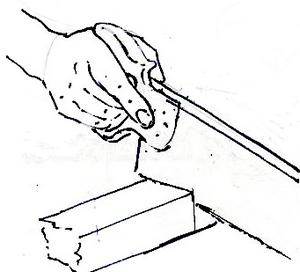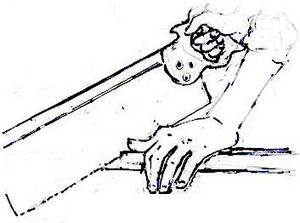- Home
- Boat Building
- Restoration
- Tools
- Bench Planes
- Caulking Irons
- Clamps
- Sharpening
- Tool Care
- Using a Hand Saw
Using a Hand Saw to Cut Straight and Square.
Using a hand saw
to cut straight, square and accurately only
requires a little bit if practice, a little patience and a couple of
simple 'tricks'.
- Just remember the first rule of carpentry; Measure Twice, Cut Once.
As an example let’s assume you want to cut a short piece of 2x1 (25x50mm) with a square end, from a longer piece.
Use the try-square to mark it all the way around.
Once you have marked it up put you pencil behind your right ear, unless like me you have floppy ears.
However, don’t put it in your mouth as you are going to need that to blow sawdust away from the saw line so that you can see the mark as you saw.
Clamp
the longer end with the part you want clear of the bench or
vice.
Assuming you are right handed, hold the saw (tenon saw) in your right hand with your forefinger extended along the handle.
Grasp the piece on the waste side with your left hand.

Place the saw on the corner furthest from you just to the waste side of the line and use the thumbnail on your left hand against the saw to help steady it.
And if you hold your elbows close to your body as you are sawing this will help counteract any tendency to twist or tilt the blade.
Use a backward stroke to begin the cut on the corner.
Start your cut using the teeth nearest the handle, this will give you the best control.

Then make a shallow cut along the top line, then continue this along the line on the side, you can do this all the way around if you wish but the top and one side is usually enough.
If I’m using a hand saw to cut a tenon I usually do the top and both sides.

Once you have established a kerf on the top and side this will help guide the saw.
Then long steady strokes, no need to press down heavily, let the saw do the work.
And when you are almost through, support the cut end with your left hand and cut slowly through the last few fibers.
For longer straight cuts, clamp a long, straight, square piece of 2×2inch (100x100mm) along the waste side of your pencil line to act as a guide.
affiliate links Books





